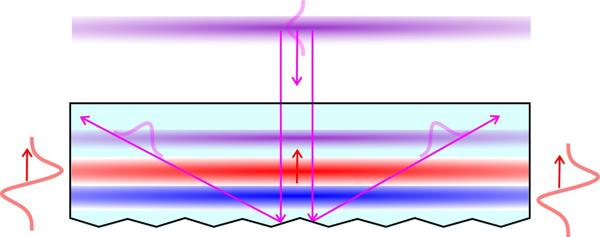Since the invention of tilted-pulse-front-pumped LiNbO3 (TPFP-LN) THz source in 2002, the maximum THz energy achieved by such sources has been increased by seven orders of magnitude, from 100 pJ to above 1 mJ. The few µJ THz energy and a few-hundred kV focused peak electric field achieved in 2007 have made it possible to perform THz pump – THz probe measurements and other nonlinear optical investigations. Because of this, TPFP LN THz source became the most widely used THz source in the lover than 2 THz frequency range.
In recent years many application possibilities of THz pulses have been proposed and demonstrated, which needs or would strongly benefits from applying THz pulses with significantly above 1 MV/cm peak electric field strength. These applications include enhancing high harmonic generation efficiency and cut-off frequency, the orientation of molecules, electron-, and proton acceleration or other manipulation, and generation of very special, carrier-envelope stable attosecond pulses. Some of these applications also require well controllable single- or few-cycle THz pulses, e.g., alignment and orientation of molecules and efficient particle acceleration and manipulation.
However, in recent years, disadvantageous properties of the conventional TPFP setup resulting in limitations against simple upscaling of the generated THz energy and field strength by increasing the pumping energy and the pumped area have been identified. These disadvantageous properties are the large angular dispersion of the pump beam, resulting in short effective THz generation length, the substantial imaging errors in the presence of angular dispersion, resulting in lengthening of the pump pulse at the edges of the large-diameter pump beam, and the needed prism shape of the LN crystal with as high as 63 edge degree, resulting in inhomogeneous THz temporal shape along with the beam cross, hindering effective focusing of the THz beam.
In 2016 the research group led by Professor Keith A. Nelson from MIT proposed and realized a modified TPFP LN THz source setup, in which a reflection echelon grating replaced the optical grating of the conventional TPFP setup. In this way, a discretely tilted pump pulse front was created, eliminating the negative effect of the large angular dispersion. Efficient working of such setup with even as short as 35 fs pump pulses was demonstrated. However, this setup also consists LN prism with a 63-degree wedge angle, hindering upscaling.
From 2017 the group of Professor János Hebling at the University of Pécs, Hungary, proposed and investigated four different TPFP LN setups containing LN slabs with (most cases) echelon structure in the input surface (nonlinear echelon slab, NLES), or in the back surface (reflection nonlinear echelon slab, RNLS). Figure 1 is a schematic diagram of the RNLS extremely high field THz pulse source. Since all of these setups contain plan-parallel LN slab or wedged LN slab with less than 10-degree wedge angle, they could be (some cases even unlimited) upscaled both in transversal size, generated THz energy and THz field. For example, it is predicted that pumping an RNLS THz source having LN slab with 7 cm diameter with 0.9 J laser pulses, THz pulses with more than 10 mJ energy and about 50 MV/cm focused electric field can be generated. So the THz sources having the new layouts could pave the way for previously unattainable applications that require extremely high electric field strength and pulse energy in the multi-millijoule range.

Fig. 1 Schematic diagram of the RNLS extremely high field THz pulse source. Purple color shows the intensity of the pump pulse, red-blue gradient shows the electric field of the terahertz pulse, and the arrows show the propagation direction of the beams.
Based on transparent numerical calculations, compares the properties of the four newly suggested TPFP-LN setups, the review paper published in Chinese Optics Letters Vol. 19, No. 11, 2021 (György Tóth et al., Performance comparison of lithium-niobate based extremely-high-field single-cycle terahertz sources).
"This work could offer for experimentalists a deeper understanding on the working of the different NLES and RNLS type THz sources, and makes easy to choose the most suitable one for a given application." said Gábor Almási.
The research group is working on the large-scale realization of the different new layouts and will improve the quantitative predictability of the used simulation code by considering the back-conversion of the THz radiation and cascading effect. They also investigate the application of the new THz generation schemes using semiconductors as a nonlinear optical material.


